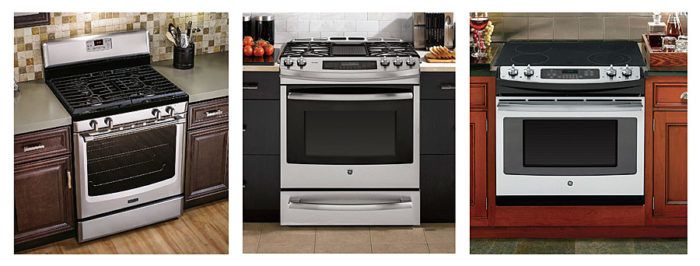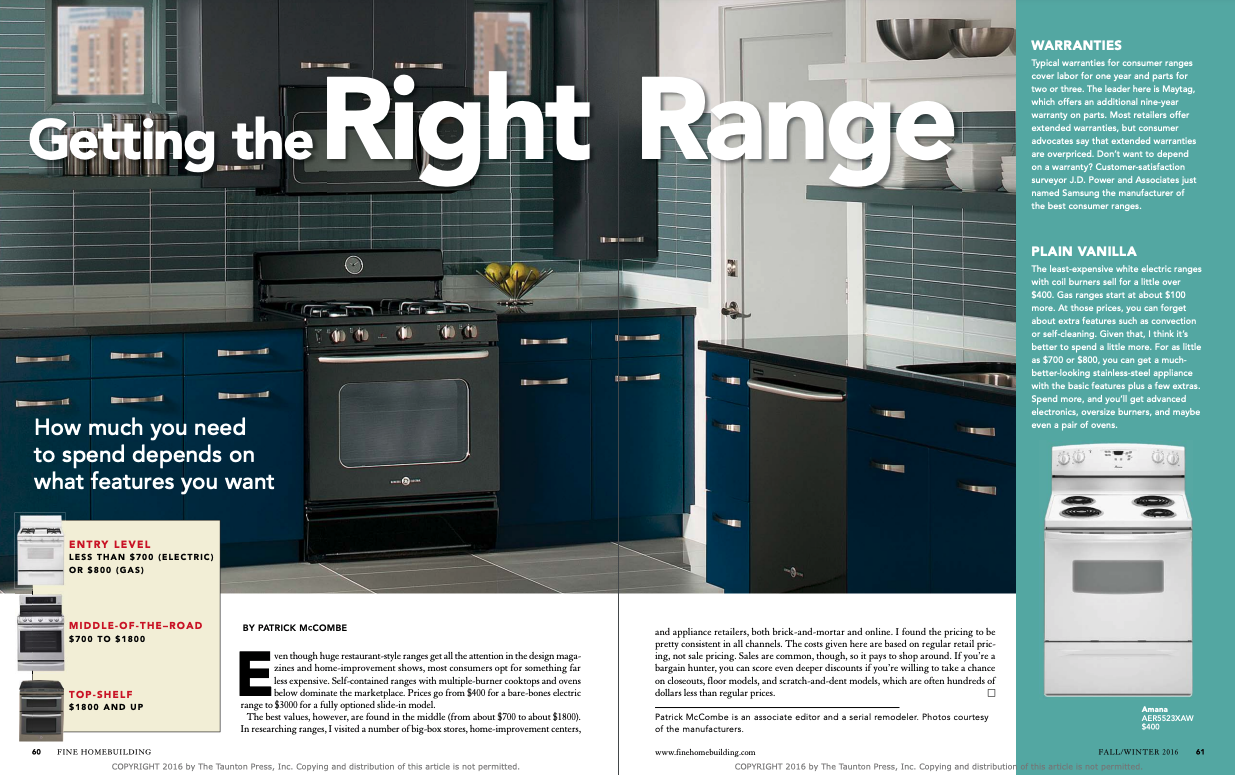Getting the Right Range
How much you need to spend depends on what features you want.

Synopsis: Options abound when you’re shopping for a kitchen range. Associate editor Patrick McCombe takes a comprehensive look at the most important things to consider: cost, warranty, convection, burners, self-cleaning, new double-oven designs, finish, installation, and style (freestanding, slide-in, or drop-in).
Even though huge restaurant-style ranges get all the attention in the design magazines and home-improvement shows, most consumers opt for something far less expensive. Self-contained ranges with multiple-burner cooktops and ovens below dominate the marketplace. Prices go from $400 for a bare-bones electric range to $3000 for a fully optioned slide-in model.
The best values, however, are found in the middle (from about $700 to about $1800). In researching ranges, I visited a number of big-box stores, home-improvement centers, and appliance retailers, both brick-and-mortar and online. I found the pricing to be pretty consistent in all channels. The costs given here are based on regular retail pricing, not sale pricing. Sales are common, though, so it pays to shop around. If you’re a bargain hunter, you can score even deeper discounts if you’re willing to take a chance on closeouts, floor models, and scratch-and-dent models, which are often hundreds of dollars less than regular prices.
Clearing the air on convection
Any discussion of ovens should start with convection cooking. Available on electric ovens starting at $700 and gas ovens starting at $800, this useful feature adds a fan to the oven’s interior to circulate the heated air for more-even baking and browning. Convection’s ability to evenly bake two sheets of cookies on different racks is the often-cited advantage, but it’s also good for more-even browning of large poultry and roasts.
The most basic convection ovens use a single fan in the back of the oven, but higher-end models sometimes include ducts or louvers to spread the flow of hot air more effectively. Because convection ovens generally bake and roast more quickly than conventional ovens, middle-and top-tier ranges can include electronic programming to automatically adjust baking time and temperature for non-convection recipes. This is an especially useful feature for home cooks new to convection. Serious chefs and bakers generally consider convection a must-have.
Two kinds of self-cleaning
Virtually all ranges priced from $800 have what is described as pyrolytic self-cleaning. The hours-long process uses high heat (900°F to 1000°F) to incinerate spills and spatters into a fine ash that’s easy to wipe away. Although it’s effective, it can create noxious fumes and acrid smoke. Many users have also found that the self-cleaning makes the oven so hot that it can damage circuit boards and electronic controls. (It happened to me. My range required a new primary circuit board to fix, and I had to cook a Thanksgiving turkey on the grill.) Manufacturers claim that newer self-cleaning ovens are better able to handle the high heat, but I still recommend waiting until after holiday meals and entertaining.
Some middle and top-tier ranges also have steam cleaning, which involves pouring a small amount of water into the oven bottom or a small pan and then running the cycle. The process uses a much lower temperature (250°F) and is faster (30 to 60 minutes) than pyrolytic self-cleaning. Unfortunately, steam cleaning isn’t as effective as pyrolytic cleaning at tackling a really dirty oven or at cleaning the oven’s sides and back.
For more photos and information on the different range options on the market, click the View PDF button below.






